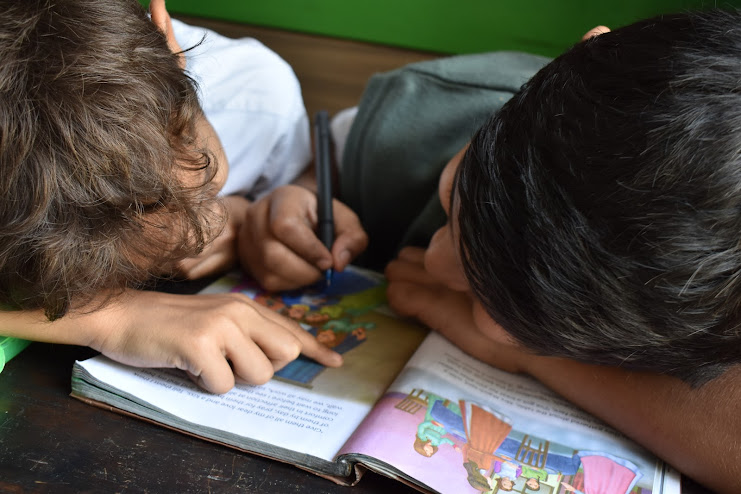**Collaborative Post**
AD: Learning a new language has many great benefits for children as well as being fun. It can strengthen the neural networks in the brain which in turn can actually make them smarter and more capable of learning new things. This is because it helps them become adept thinkers who are good at problem-solving, critical thinking, listening, and memorising new pieces of information. Those that are fluent in other languages also display enhanced creativity and mental flexibility.
Children can begin familiarising themselves with a new language from as early as three years old when their receptivity to language begins. If you have a toddler, you will know how difficult it can be to grasp their attention, so we’ve put together our top tips to make learning a new language fun.
Interactive Games
Toddlers are notorious for their short attention spans, so interactive games are a brilliant way to get toddlers excited and engaged. Games like snap can be easily mocked up with colouring crayons and sheets of colourful paper. All you will need to do is draw illustrations of everyday objects and create corresponding cards with foreign names on them, perhaps with the English equivalent on the back so they can see both words together and make the connection.
Cartoons
Repetition helps children to familiarise themselves with new things so as a way to help them remember and pick up new words, you may introduce them to foreign cartoons and TV shows. Children are notorious for repeating catchy phrases and songs they see on TV so it is only inevitable that watching cartoons in a different language will help them pick up common words and phrases from it.
Speak It Around the House
If you have a second language that you’re trying to introduce to your child or if you’d like them to learn something new entirely, it is recommended that you speak it around the house. This is particularly good for children who are auditory. The more that they hear the words being said, the more likely they are to remember them and grow their bank of foreign words. Children learn through copying and repetition so perhaps set aside certain days or times in which you will only speak in the second language you are trying to learn.
Picture Books
Children also love a good storybook, so instead of sitting them in front of the TV, you might decide to pick out a popular book that they’ve read before but in another language. As they follow along, they will start making connections and picking up on what words are in other languages. To begin with try doing this with books they already know or that have strong images that they can relate the words too.
Be Patient
What’s important is that you’re patient. It can take children a little while to get used to new concepts so take it one step at a time until they’re confident. You should also try and stay consistent in your efforts to give them the best chances of getting to grips with what they have learned. Try spending at least 30 minutes a week. See how your child gets on and then gradually increase this time. Have fun with it and if you or your child do end up getting frustrated with learning then you can always put it to one side for a few months and try again later.
Would you ever consider teaching your child a second language and if so which language would you like your child to learn and why? Let me know in the comments below.
xXx



No comments:
Post a Comment